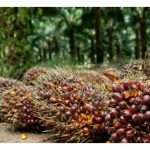There is truth to the idea that the taste (and sometimes yield) of durian fruits can be influenced — and in some cases enhanced — by cross-pollination between different clones.
Let’s break it down carefully:
1. Durian’s pollination biology
Durian (Durio zibethinus) is a cross-pollinated crop by nature.
Most commercial clones (e.g. Musang King D197, Black Thorn D200, D24, etc.) are self-incompatible or partially self-incompatible — meaning their flowers do not set fruit well if pollinated by pollen from the same clone.
Pollination is mainly carried out by nocturnal pollinators (bats, moths, occasionally insects) that move pollen between trees.
Therefore, having mixed clones in the same orchard improves pollination success and fruit set.
2. How cross-pollination affects taste and fruit quality
When a durian flower is fertilized, only the embryo and seed carry the father’s (pollen) genetics — but the edible flesh (aril) develops from maternal tissues.
That means:
The pollen parent (male) doesn’t directly change the mother’s aril chemistry — but it can indirectly influence it through physiological effects on fruit development.
Here’s how that works:
| Mechanism | Effect on Fruit |
| “Metaxenia” effect (physiological influence of pollen on fruit tissues) | Can alter fruit size, sweetness, aroma, and ripening rate even though the pollen genes aren’t in the flesh. |
| Improved fertilization → better seed development → better aril filling | Fully developed seeds promote full, thick, creamy flesh; poor pollination leads to small, flat seeds and thin, watery flesh. |
| Stress reduction on mother tree | Cross-pollination produces more uniform, stable fruit set, leading to more balanced sugar–fat metabolism. |
| Pollen diversity | Some combinations stimulate stronger hormone signals (auxins, gibberellins), improving aril texture and aroma. |
So, although the “father clone” doesn’t genetically modify the taste, it can physiologically enhance the sweetness, creaminess, and aroma intensity via these effects.
3. Field observations and studies
Several Malaysian and Thai studies have observed:
- D197 (Musang King) pollinated by D24 produces slightly larger, creamier fruits with stronger aroma compared to self-pollination.
- D200 (Black Thorn) cross-pollinated with D24 or D160 sets fruits more consistently and ripens more evenly.
- Orchards with multiple clones (3–5 varieties) tend to have better fruit set rates (up to 30–50% higher) and more balanced taste consistency across seasons.
Some farmers even say:
“If your Musang King is alone, it tastes lonely.”
That’s a poetic way to describe the biological truth — cross-pollination livens up the fruits.
4. Practical recommendations
If your goal is to enhance taste and yield, consider:
- Plant at least 3 different clones with overlapping flowering times (e.g. D197 + D24 + D160).
- Maintain pollinator populations (especially bats and insects) — avoid excessive pesticide use.
- Arrange clones in mixed rows rather than in separate blocks to encourage natural pollen flow.
- Use hand-pollination during critical bloom periods for targeted crosses if you want to experiment with “taste enhancement”.
5. Summary
| Factor | Self-Pollination | Cross-Pollination |
| Fruit set | Low to moderate | High |
| Seed development | Often incomplete | Uniform |
| Flesh filling | Sometimes thin | Thick and creamy |
| Aroma complexity | Sometimes muted | More pronounced |
| Overall taste consistency | Variable | More balanced and rich |
✅ Conclusion:
It is true in practical and physiological terms that planting different durian clones together — allowing natural cross-pollination — can enhance fruit taste, texture, and yield. The effect is not purely genetic but is driven by better fertilization and hormonal interactions (metaxenia) during fruit development.
Source: Professional Platform
Note: For Reference Only










